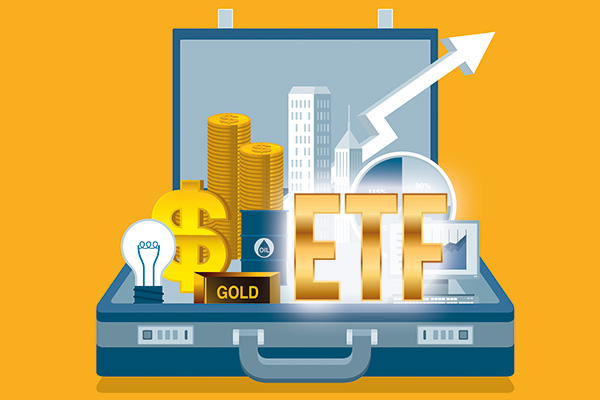ETF analysis: three reasons why you need a dividend ETF
Three compelling reasons to build some ballast into your portfolio.
19th March 2020 10:59
Three compelling reasons to build some ballast into your portfolio.

This piece was written before the impact of the coronavirus on global markets.
Investors seeking capital preservation, steady income and low costs would do well to have a dividend exchange traded fund in their portfolio. While it is tempting to chase the highest yields, it is wise to keep an eye on the long term.
Successful income investing rests on finding a balance between achieving an optimal income stream and protecting capital over the long term.
Some investors have a habit of focusing on large but unsustainable headline yields, only to see payouts slashed. However, with global dividend equity indices yielding more than 4% at present, income investors don’t have to take large risks to enjoy a healthy income stream.
Dividend-focused ETFs may not shoot the lights out by backing the Next Big Thing, but they should provide ballast and security during times of uncertainty.
Read more about ETFs:
- How to do climate-friendly ETF investing
- The most popular tracker funds and ETFs of 2019
Three key reasons why a dividend ETF may be a good choice for your portfolio
1) Capital preservation
Dividend investing is essentially about unexciting necessities. Dividend ETFs usually invest in large, profitable businesses that have been around for a while such as Colgate-Palmolive, Johnson & Johnson and Coca-Cola, all of which have reliably paid dividends and, crucially, grown them for the past 55 years.
Dividend ETFs also favour utility companies such as water and electricity suppliers, which enjoy reliable income from a sticky customer base.
With such firms in their portfolios, many dividend ETFs receive a steady cash flow, and they tend to suffer less during times of uncertainty. This is not surprising: if consumers must choose between their Amazon Prime membership or paying their electricity bill, they will have to opt for the latter.
So, yes, your dividend ETF is likely to miss out on the next Netflix. However, most of the companies it holds today will still be around – and paying a dividend – in 10 years’ time.
2) Steady income
A diversification strategy is a vital component of any successful investment portfolio, including income investors’ portfolios. By holding a range of companies in your portfolio, you reduce the impact that any single stock will have on your overall returns. What’s more, by ensuring that your dividends come from a variety of sources, rather than one or two generous payers, you spread the risk to your income stream.
The importance of diversification has been underlined in recent months by dividend suspensions and cuts from the likes of Centrica, Royal Mail and Marks & Spencer.
Highly diversified ETFs, such as the Vanguard All-World High Dividend Yield, which has been awarded a bronze Morningstar analyst rating, minimise the negative effect of income cuts by holding nearly 1,500 dividend stocks across 49 countries, ranging from Egypt to the US. The benefits of such diversification have enabled the fund to maintain a steady yield, even during major market shocks such as the global financial meltdown, eurozone crisis and Brexit vote.
Another interesting choice is the iShares World Quality Dividend ETF, launched in June 2017, which currently holds 339 stocks in developed equity markets, including Exxon Mobil and Verizon.
3) Low cost
High fees eat into your investment returns and therefore your investment income. A growing awareness of the effects of punitive fund charges has led to increasing appetite for low-cost ETFs in recent years.
Consider the following scenario. You invest £10,000 for retirement income in a fund with an annual ongoing charge of 0.3%. At the same time, you invest £10,000 in a fund that charges 1.65%. You hold both for 30 years, at which point you retire and cash out. For the sake of simplicity, we’ll assume a 10% annual rate of return (gross of all fees) for both funds.
That difference in fees really adds up over time. At the end of the period, the cheaper fund will have grown in value to £160,000. The more expensive fund will have grown to just £107,000. Assuming the fund pays a 4% dividend, the more expensive fund will pay £4,280, while the cheaper fund will deliver £6,400.
Dimitar Boyadzhiev is a senior analyst in manager research, passive strategies at Morningstar.
This article was originally published in our sister magazine Money Observer, which ceased publication in August 2020.
These articles are provided for information purposes only. Occasionally, an opinion about whether to buy or sell a specific investment may be provided by third parties. The content is not intended to be a personal recommendation to buy or sell any financial instrument or product, or to adopt any investment strategy as it is not provided based on an assessment of your investing knowledge and experience, your financial situation or your investment objectives. The value of your investments, and the income derived from them, may go down as well as up. You may not get back all the money that you invest. The investments referred to in this article may not be suitable for all investors, and if in doubt, an investor should seek advice from a qualified investment adviser.
Full performance can be found on the company or index summary page on the interactive investor website. Simply click on the company's or index name highlighted in the article.